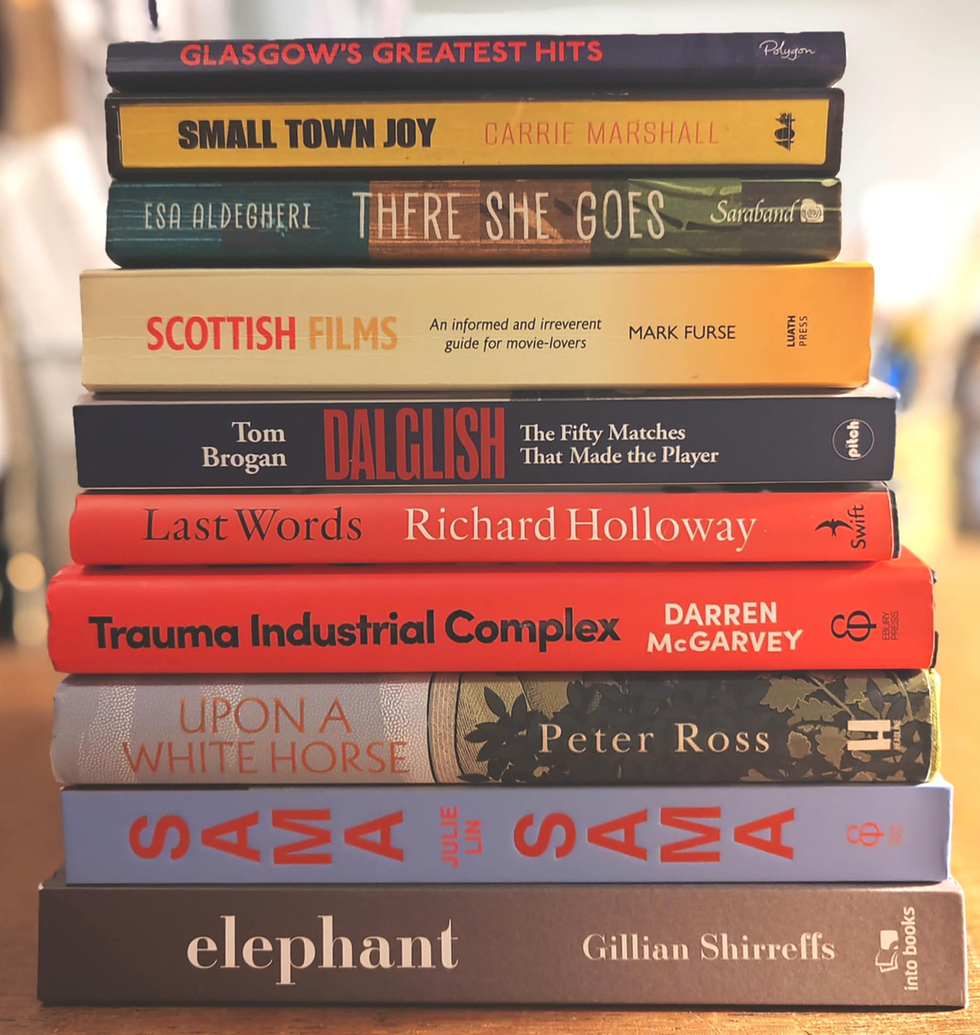The Road Less Travelled: A Review Of Graeme Macrae Burnet’s The Accident On The A35…
- Alistair Braidwood

- Oct 13, 2017
- 3 min read
Updated: Nov 23, 2021

How do you follow a cultural touchstone – something which captures a moment, stands aside from what’s around it, and which moves from the reviews to the news section of the papers? If you’re The Stone Roses, after a seminal debut, you lock yourself away for five years in the studio. If you’re Sam Raimi, you basically remake your breakthrough film, Evil Dead, with a bigger budget and call it Evil Dead II. And if you’re J.D. Salinger, challenged to write a sequel to Catcher In The Rye, you admit defeat.
Graeme Macrae Burnet is faced with following his Man Booker shortlisted His Bloody Project, which, partly due to the fact it was published by Scottish indie publisher Saraband, became arguably one of the most famous contemporary novels in the English-speaking world for a time last year. For many this daunting task would be overwhelming, but Macrae Burnet has tackled this potential problem in style by writing his own sequel, and a fine one at that, but to his debut novel The Disappearance Of Adele Bedeau rather than its more famous successor.
He returns to the French village of Saint-Louis and to his first literary hero, Inspector George Gorski, for The Accident On The A35. If you have read The Disappearance Of Adele Bedeau (and you should) then you’ll find it a pleasure to be back in this world where secrets and lies are par for the course. Fans of His Bloody Project will also find lots to love as there are familiar themes including questions of authorship, betrayal, family, love, death, truth and lies (or rather, what can be said to be true, if anything, and what is false?), and the possibilities of youth versus the reality of adulthood, the latter personified by George Gorski.
Gorski is investigating the titular accident, and is immediately suspicious that things are not as they first appear. As he investigates he has to deal with the troubles of his own life, increasingly finding relationships with the dead to be less complicated than those with the living. His work and home life are unsatisfying, and he is in danger of collapsing under the strain. World weary, yet still feeling keenly, Gorski is an unforgettable creation who deserves to be seen as well as read, and these are books screaming for TV or film adaptation.
Theories of existentialism are undoubtedly a major influence on The Accident On The A35, with Jean Paul Sartre’s philosophy and fiction particularly important, (he is, rather cruelly, refered to as “the squat toad of existentialism” at one point). As well as Sartre’s novel The Age Of Reason, which is read by one of the central characters and alluded to more than once, you can also detect the work of Albert Camus, particularly The Stranger, and Alexander Trocchi’s Young Adam.
This is most obvious in the character of Raymond Barthelme, a teen who has lost his father, and who, when we meet him, is in a state of what Sartre called “bad faith” – unable to act with free will, instead worrying about social and cultural expectations as to how he ‘should’ act and react. With the potential to become Macrae Burnet’s answer to Camus’ ‘Meursault’ or Trocchi’s ‘Joe’, Raymond’s angst is both existential and teenage, a deadly combination.
The Accident On The A35 is crime fiction, but is about as far from Tartan Noir as it is possible to get. Macrae Burnet has spoken in interviews of his admiration for the work of Belgian novelist Georges Simenon (author of the Maigret novels, but so much more) and I am also reminded of American crime writer Jim Thompson, with whom both share an existential sensibility. If you would like a more contemporary reference, then Alice Thompson’s The Existential Detective is one which, given its title and content, obviously springs to mind.
In ‘Why Write?’, the second chapter of his essay What Is Literature?, Sartre claimed that the relationship between writer and reader is one of mutual commitment stating, “To write is thus both to disclose the world and to offer it as a task to the generosity of the reader.”. The Accident On The A35 makes that relationship clear as the reader is drawn into the world that Macrae Burnet creates and is forced to engage with the philosophical and moral questions posed, and as such recognise themselves in the fictional world. It’s a relationship which is key to all successful fiction.
What The Accident on the A35 undoubtedly shows, especially when taken with his previous work, is a writer engaged with what he does, and committed to how he does it. If His Bloody Project introduced you to Graeme Macrae Burnet then now is the time to cement the relationship as it’s one which promises ever greater rewards.
The Accident on the A35 is published by Contraband, an imprint of Saraband.









Comments